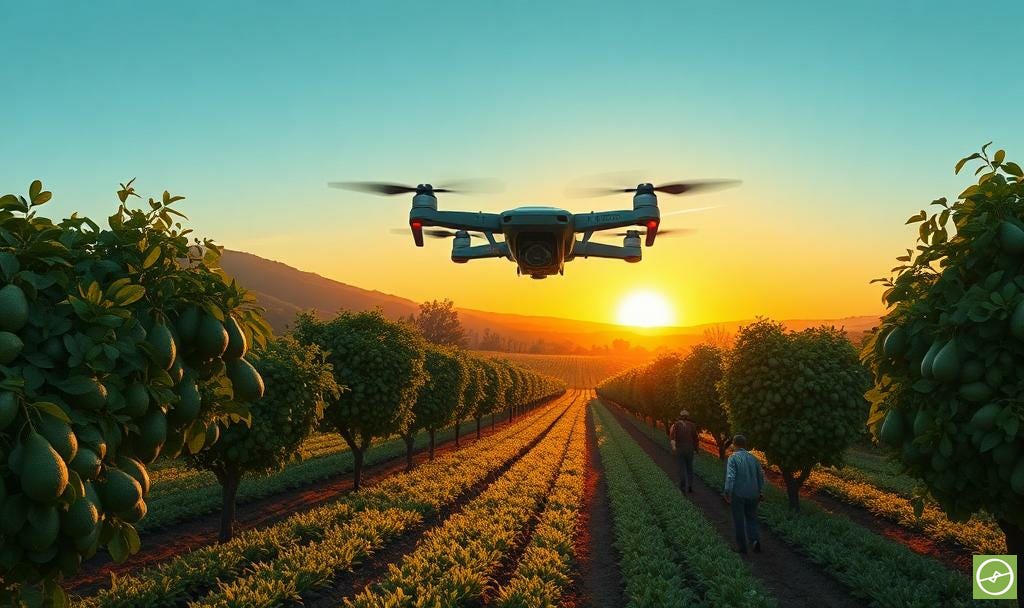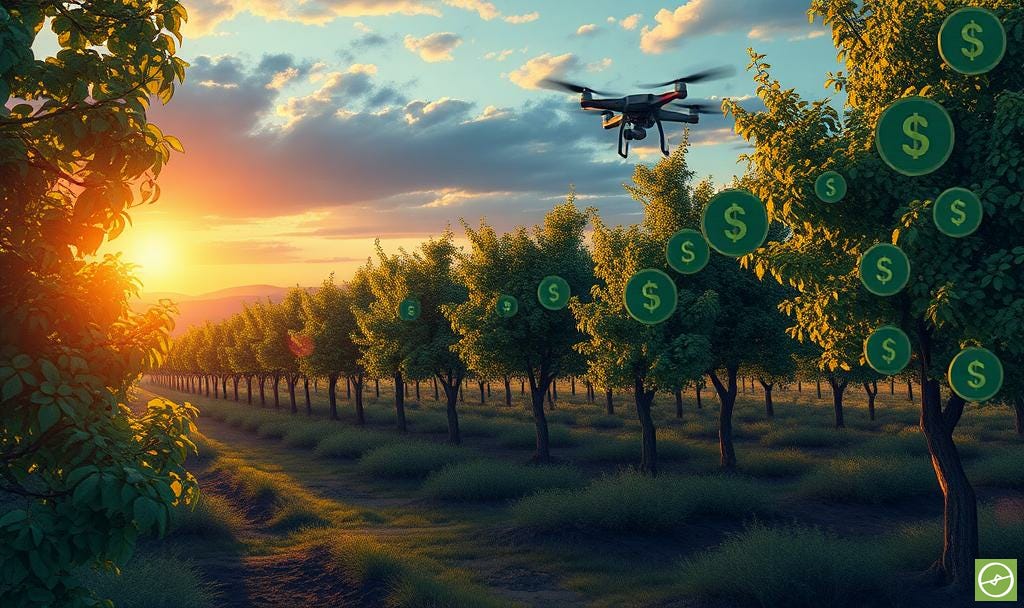A Case Study in Margins: The Avocado Block Dilemma
How drone scans revealed hidden truths in avocado orchards; and forced tough decisions on profitability and replanting. The avo agtech edge in action.
When Willem1 stepped into his new role as farm manager, the numbers were loud and clear, and they didn’t lie.
On paper, the avocado operation looked respectable. Blocks spread across rolling hills, healthy cash flow from years of development, and a loyal team who knew the orchards like the backs of their hands.
But the spreadsheets told another story: profitability was slipping.

Block by block, the data revealed a pattern that gnawed at him. Several orchards weren’t just underperforming - they were bleeding money! Input costs were rising faster than income per hectare.
Fertiliser, energy, irrigation, labour, fuel… all went into operations; yet the returns stubbornly lagged behind. For some blocks, the break-even line had already been crossed, and in the wrong direction.
The first instinct was denial. Maybe the next harvest would surprise them in a good way? Maybe fruit quality would pull through? Maybe a spike in market demand? Let’s hope that foreign producers fall on some bad luck and come in with an undersupply.
Hmm… feels like gambling or wishful thinking at best.
As Willem poured over the past five seasons of records, a grim picture emerged: The underperforming blocks weren’t anomalies. They were part of a trend.
That’s when the drone scans came in.
On the platform screen, problems lit-up in shades of stress and low canopy volume.
Two blocks in particular were glowing red on the map: small, shrivelled canopies where lush green ought to be. In contrast, neighbouring blocks pulsed with healthy vigour; the kind of vegetation maps that inspire confidence before harvest.
Next, Willem walked those blocks himself, guided by insights from above. The differences were undeniable.
The struggling orchards sat on the windward slope of the farm.
The trees were stunted, battered by prevailing winds that pummelled the slope, and funnelled down the valley.
Digging deeper (quite literally) revealed shallow soils over rock. Recent soil mapping confirmed it was a poor planting choice made years ago.
He faced a brutal choice: Continue to pump inputs (fertiliser, water, pesticides) into trees that could never repay the investment. Or cut his losses.
In this moment, he chose the latter. The blocks were pulled out, land left fallow. Resources of time, labour, and capital… were all redirected into orchards with stronger prospects. It was a painful decision, but the right one.
Yet, not all challenges were so clear-cut. Other orchards, though still profitable, weren’t living up to their potential. Drone-supplied per-tree insights uncovered the culprits: pockets of trees dragging down the block averages. Broken branches from careless tractor passes. Trees hit by Phytophthora root rot. Gap-fillers that never took-off - stunted. Some trees drowned by over-irrigation; others shaded out, while dozens had quietly faded from neglect.
Here, the strategy was different. Willem kept most of the block intact, but he moved quickly to act on the outliers. Diseased trees were removed. The salvageable ones were nurtured with root health interventions tailored to their needs. Irrigation inadequacies fixed.
The drone scans gave him not only a list of problem trees, but the coordinates to find each one. Precision farming at work. Empowered staff. Confident farming.
The next season, yields lifted. Not dramatically, but noticeably. Enough to cover the cost of the interventions and push the block’s ROI back into positive territory.
The season after, the recovery gathered pace. It was proof of a principle: a block doesn’t have to be perfect, but every tree matters. Collectively they really do matter.
And then came the problem child.
One block, year after year, refused to improve. Drone scans compared to neighbouring blocks on the same cultivar told the story: lower health, weaker vigour, poor fruit size, awkward sizing distributions.
Historical harvest data echoed it. Some years, the fruit were acceptable. More often, it they short. Small, misshapen, inconsistent quality, and overall low tonnages.
The suspicion grew: and after some investigation, the truth came out. This was a rootstock problem. Perhaps the nursery stock had been sub-par, or the rootstock choice was ill-suited to the soils. Whatever the reason, the block was flawed at its very foundation.
Now Willem faced his toughest decision yet. Should he replant? Rip out the trees, rework the land, and start afresh? That meant years of sunk cost before any fruit came back into production. Or should he push harder with targeted inputs, hoping to nudge the block over the profitability threshold, season-by-season?
Neither option was easy. Both carried risk. Both required faith.
This was no longer just about canopy maps or yield curves. It was about the manager’s philosophy of farming. Was he building for the next quarter’s numbers, or the next decade’s?
Yes, in this case what the drone scans had given him wasn’t an exact answer. But it gave him some power. Power to make decisions. An authoritative mix of expertise, experience, and hard hitting data.
And it was clarity. Clarity in the way of seeing the problem in all its complexity. And in farming, clarity can be the most valuable tool of all.
The thinking starts here, but the real change starts when you take action.
Introducing the Avocado Innovation Series
Looking at the statistics behind this newsletter, one thing is clear….
Orchard Stress to Profitability: How Drone Data Guides Smarter Sampling
Modern farming is a game of margins. Input costs rise. Market expectations tighten. And yet, small changes on the farm can tip the scales towards profitability.
*Name changed for anonymity.




